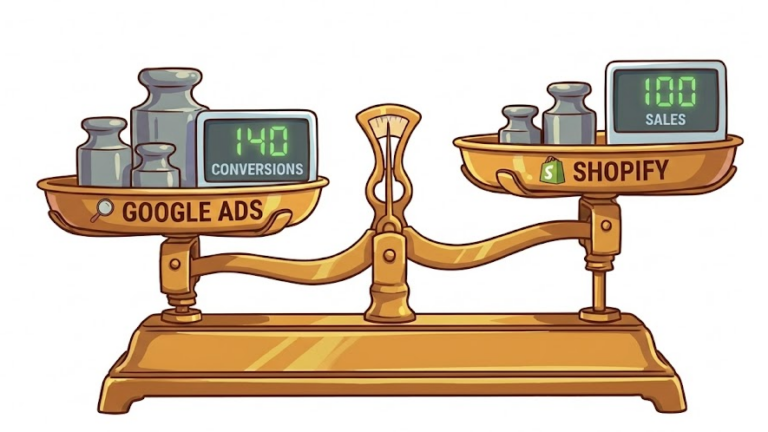A former Meta product manager just revealed that Meta’s Shops Ads performance metrics were inflated, by up to 19%. This isn’t a small rounding error. It was due to counting shipping and taxes as revenue and subsidizing ad placements to boost results. Now more than ever, marketers need to focus on real, business-level efficiency, not platform-reported inflation.
What’s Happening
Meta’s ad performance for Shops may not have been what it seemed. A former Meta product manager, who worked directly on ad metrics, just blew the whistle on how the company allegedly manipulated results to make Shops Ads appear more successful than they really were. This includes artificially inflating return on ad spend and pushing those ads harder in the auction system using internal subsidies.
The report says this wasn’t a small test, it was a systemic effort to inflate Shops Ads performance metrics, masking real efficiency and misleading advertisers across the platform.
The reason?
Meta needed a win after iOS privacy changes. Shops kept the ad journey inside Meta’s platform, which meant less reliance on outside tracking. That gave Meta more control over attribution and performance, but it also opened the door for this kind of manipulation.
A whistleblower filed claims in a U.K. tribunal stating Meta misled advertisers by:
- Counting shipping fees and taxes as part of the revenue.
- Subsidizing bids in ad auctions to inflate performance numbers.
- Reporting a Shops Ads ROAS that looks 17–19% higher than the actual net sales would justify.
These alleged tactics were a response to the hit Meta took from Apple’s privacy changes. With ATT in place, Meta had fewer iOS signals, so it pushed Shops Ads, which kept conversions inside its own ecosystem, and made them look like they were outperforming regular ads by default.
Why It Matters
This isn’t just a scandal story. It’s a warning, ROAS reported inside platforms can no longer be taken at face value.
- Mars-blur metrics: In-platform ROAS tidal waves profit on every ad dollar, but that can be artificially high when platforms decide what counts as revenue.
- Attribution confusion is still real: Privacy changes and tracking restrictions have made cross-platform attribution murky. We can’t trust click-to-conversion attributions as heaven-sent.
- MER as a sanity check: Only looking at internal platform metrics gives brands too much blind trust. When revenue appears higher, but it’s not matched by your actual bottom line, that’s dangerous.
Moving to MER Is Now More Important Than Ever
We’ve known for years that in‑platform reporting often inflates performance, with overlaps and double-counted conversions across different channels. And with data privacy laws breaking attribution models even further, what a single platform reports is rarely reliable.
That’s where Marketing Efficiency Ratio (MER) comes in. By comparing total business revenue against total marketing spend, MER gives a clean view of how efficiently your marketing actually performs, across everything, not just a handful of pixels.
- It cuts out inflated in-platform reporting.
- It overcomes messy, overlapping attribution.
- It puts incrementality front and center: Did your marketing actually grow your business?
If your ROAS looks great but MER stays flat, or gets worse, that gap is where trust is broken and where strategy needs to shift.
What You Should Do Now
Audit Platform ROAS vs. Business Reality
- Compare Meta ROAS against your own revenue data for correlated days or campaigns.
- Flag discrepancies that look too good to be true.
Start Tracking MER
- Gather your total revenue over a time period and divide by your total marketing spend for that same window.
- Use it as a North Star KPI across channels, no platform filter.
Recalibrate Budget Against MER, Not ROAS
- If a channel’s ROAS seems inflated, but MER doesn’t budge, shift budget to channels with clearer, business-aligned ROI.
Educate Your Stakeholders
- Explain why platform data may be inflated.
- Present MER as the more strategic, performance-aligned metric.
ROAS alone led us astray; platforms had every incentive to make results look glossy. But if your business health isn’t matching the ads platform story, something’s off. MER brings you back to business reality and protects against vanity metrics.
Need help calculating MER, auditing ad performance, or aligning your spend with the true revenue impact? Let’s schedule a session and get your marketing moving toward real efficiency.






no replies